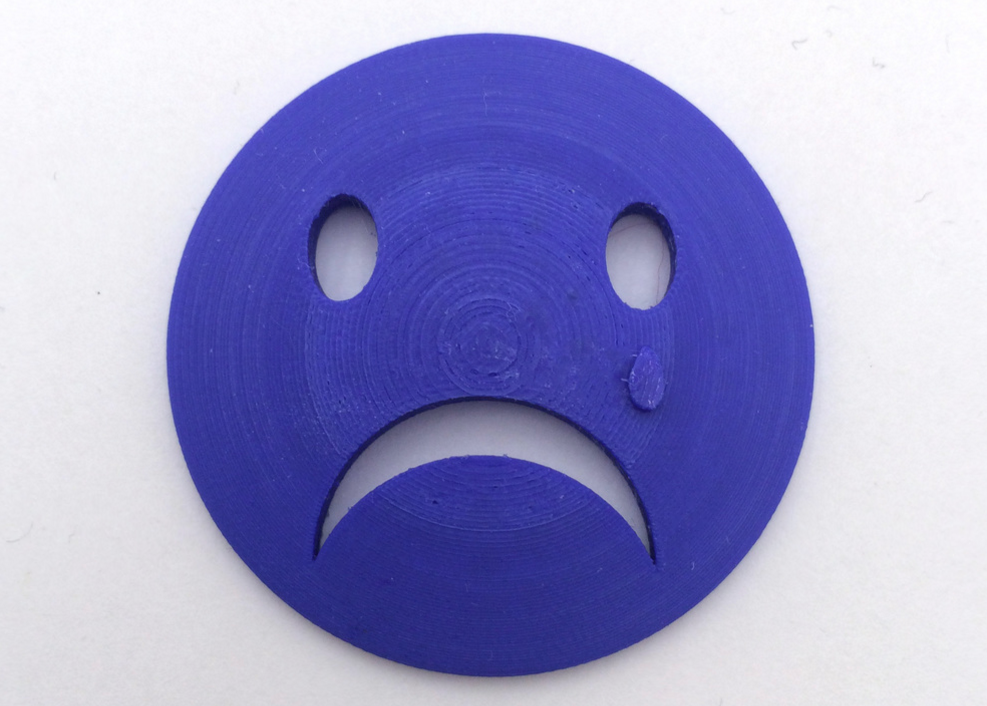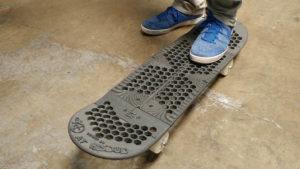Perhaps the most glaring issue within the 3D printing community, intellectual property (IP) infringement has plagued 3D designers—and inventors in general—for quite some time now. This dilemma was fully actualized earlier this year when an eBay seller named “just3Dprint” started selling hundreds of 3D printed models created by various Thingiverse designers. Once this ploy was discovered by popular Thingiverse user Loubie, who had her own designs poached by the shady eBay user, designers, law experts, and 3D printing companies all began to give their own perspective in on the controversy, which ultimately ended with just3Dprint removing the 3D models once their weak defense was trounced.
Earlier this week, I wrote an article about a fully 3D printed skateboard created by the San Diego-based 3D printing company SD3D. Not only did they successfully 3D print and assemble a complete board, they also had it featured and tested out on the popular skateboarding YouTube channel Braille Skateboarding. Almost every part of the skateboard was 3D printed, including the deck, which designer Kiana Duncan noted was inspired from a penny-style board created and uploaded to Thingiverse by Simone Fontana.
Fontana’s actual 3D printed design was showcased in the Braille Skateboarding video alongside the one the received they from SD3D, which was previously printed and sent in from a 3D printing YouTube channel called 3D Print Everything. According to Fontana, the person who sent this board to the skateboarding team didn’t credit him for the design, and also inserted the wrong rod into the 3D printed board, causing it to break almost instantly. As of now, the YouTube channel has credited the designer for the second skateboard, and has also linked the download and instructions for building it. In addition Fontana has also claimed that the first 3D printed street skateboard in the video, which was printed and assembled by SD3D, was stolen from his original design as well.
Shortly after our article on SD3D’s skateboard went live, we were contacted by Fontana himself, who firmly believes that the skateboard design was stolen from him, not inspired by him. Fontana claims that the SD3D team simply added a curve to his pre-existing design, essentially making a concave version of his model and taking full credit for it. The designer believes that the 3D printing company stole the idea of having three rods connecting the board and the four-part structural design of the deck from his model, which took him months to create, as he previously documented on a blog post on Pinshape. Fontana’s design was released under a Creative Commons – Attribution – Non-Commercial – No Derivatives license, and thus believes that it has been infringed upon.
- SD3D’s skateboard design
- Simone Fontana’s penny-style design
When we reached out to SD3D for comment, they quickly responded to the accusation by claiming that their 3D printed skateboard was designed from scratch and was only “inspired” by the three metal rods, which they say they would have used regardless of Fontana’s design. In fact, they claimed that they had only given credit to Fontana in their blog post about the board “solely because he was blasting our company from every angle for the mere fact we used metal rods, but the design was entirely unique.” The 3D printing company also claimed that their design was curved, concaved, a different type of skateboard, and uniquely designed by their designer Kiana Duncan. The dispute, much like other recent IP infringement accusations involving 3D models, looks to have created a slight rift between members the 3D printing community and the accused party.
The controversy popped up on Facebook last week, as the co-founder of the 3D Printing Club social media group, Remco, commented on SD3D’s post about the 3D printed skateboard being in the Braille Skateboarding video. He recommended that they issue an apology for not giving Fontana enough credit and that the word is already spreading fast through the 3D printing community. Duncan, the designer of the skateboard in question, responded to his comment stating that SD3D gave Fontana credit for inspiring their board in their blog, but that the similarities between the two designs begin and end with the three support rods in the middle section of the deck, which are found in all penny-style boards.
Fontana told us that he’s not looking for any financial compensation from SD3D, just proper credit for his work and an apology. The designer also claimed that this recurring problem has caused many like himself to depart for more protective platforms like Patreon, which requires an NDA signature acknowledging that the downloaded 3D file is for personal use only. Patreon additionally allows for supporters of content creators to act as patrons of the arts, contributing financially so creators of content can continue their work, and allowing for these patrons to receive, in cases like Fontana’s, 3D design files.
At the end of the day, I don’t have the IP expertise to decide if SD3D is guilty of infringing on Fontana’s IP or not. It is true that the middle support rods and four-part deck design seem to follow the same principle as Fontana’s penny-style board design, but Duncan’s street skateboard is different in type, shape, and pattern. However, what is clear regardless of the outcome of this ongoing controversy, is that 3D designers have grown sick and tired of others trying to capitalize off of their work without giving credit where credit is do. I can’t say for sure who is lawfully correct in this situation, but what I do know is that similar cases of IP infringement have made designers much less inclined to openly share their creations with the 3D printing community. Discuss further in the 3D Printed Skateboard Controversy forum over at 3DPB.com.
Subscribe to Our Email Newsletter
Stay up-to-date on all the latest news from the 3D printing industry and receive information and offers from third party vendors.
You May Also Like
Precision at the Microscale: UK Researchers Advance Medical Devices with BMF’s 3D Printing Tech
University of Nottingham researchers are using Boston Micro Fabrication‘s (BMF) 3D printing technology to develop medical devices that improve compatibility with human tissue. Funded by a UK grant, this project...
3D Printing Webinar and Event Roundup: April 21, 2024
It’s another busy week of webinars and events, starting with Hannover Messe in Germany and continuing with Metalcasting Congress, Chinaplas, TechBlick’s Innovation Festival, and more. Stratasys continues its advanced training...
3D Printing Webinar and Event Roundup: March 17, 2024
It’s another busy week of webinars and events, including SALMED 2024 and AM Forum in Berlin. Stratasys continues its in-person training and is offering two webinars, ASTM is holding a...
3D Printed Micro Antenna is 15% Smaller and 6X Lighter
Horizon Microtechnologies has achieved success in creating a high-frequency D-Band horn antenna through micro 3D printing. However, this achievement did not rely solely on 3D printing; it involved a combination...
































